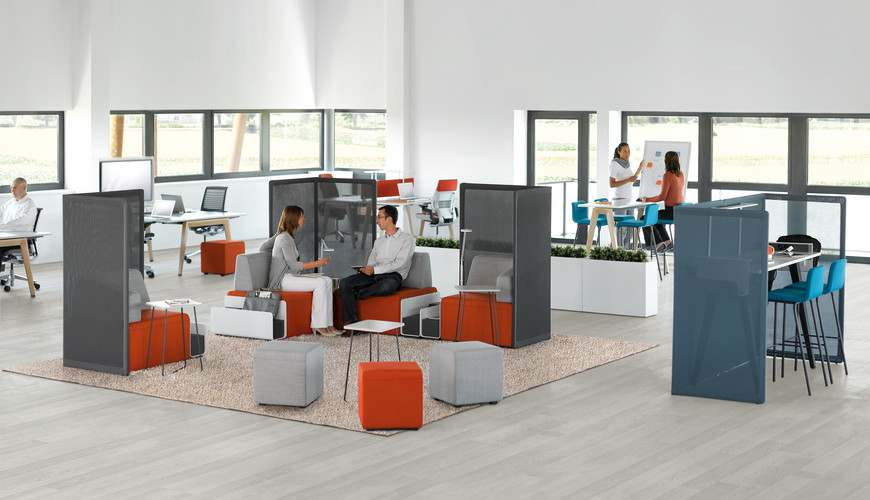For many people, these two concepts appear to be contradictory. Yet according to Nicolas de Benoist, member of the Steelcase research group «WorkSpace Futures», a company has many tools at its disposal to promote a sense of wellbeing in the workplace.

Workstations are often designed with the aim of being as efficient as possible. This results in standard sizes and consequently no opportunity to choose the work environment that is best suited to the task at hand. However, if employees are given the choice, they have the sense of being more in control, they feel less stressed and determined by others, and work with greater commitment and dedication. For companies to offer freedom of this nature, there are three key criteria:
A VARIETY OF SPACES.
An ecosystem comprising interlinked zones and areas that offer users a variety of spaces and support various working practices.
A VARIETY OF WORK STYLES.
A selection of workplace solutions that encourage employees to sit, to stand, and to roam by supporting the work with a variety of technologies.
A VARIETY OF PRESENCES.
The opportunity to gather different experiences through physical or virtual presence at workplaces, encouraging interaction with other people.
If a company successfully combines these three criteria when designing workplaces, thereby boosting the sense of wellbeing of its employees, this has unbelievably positive effects on their levels of commitment and dedication.
Source: Steelcase